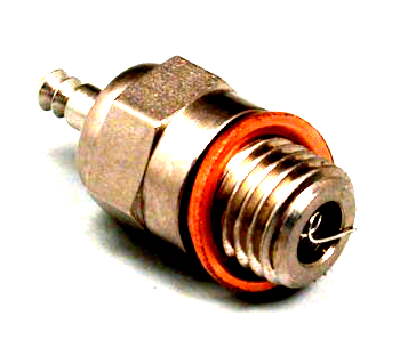Geared motors run in the opposite direction to direct drive motors, so it you have a direct drive motor, and you want to bolt on a gearbox, then it will have to be re-timed, in order to produce the optimum performance. Direct drive motors turn anti-clockwise, and have been timed during the manufacturing process, so they will be quite a way out, if you just tried to fly a model with them. Likewise if you ever need to install new brushes or armature, then it is a good idea to re-adjust the timing. Note, that some 'can' motors may not have adjustable timing, so check them out first.
Timing dictates the way a motor will run. If it is advanced, then the motor will put out a bit more power, but will suffer in other areas, such as running a lot hotter. If the timing is retarded, then the motor will produce less power, which is unacceptable in most cases.
Astro Gobalt motors have two screws on the output shaft end of the motor, and it is a simple matter to just loosen them and rotate the magnet housing (which is black in colour) in order to adjust the timing. They need to be retightened when the optimum setting has been found. (You all knew that, but better to mention it, just in case). There are some iterns which are required, in order to perform the task, so it is quite possible that you may have to ask around the club members, if there is a difficulty.
You need access to an amp meter capable of reading high amperages, in order to read the amount of current the motor is drawing. It is best to test this current with NO attachments, such as props ets, on the motor. Loosen the screws and rotate the magnet housing until you find the point where the least current is being drawn (neutral point). lt may be an advantage to mark this spot on the motor. Next, rotate the magnet housing until you get the desired current draw, which is around 2 amps - 4 amps above the neutral point. This timing should give you the best wear on brushes, power and efficiency mix. Astro recommend 2 amps above neutral for 'standard' motors, and 4 amps for the FAI type motors. If you are setting up a direct drive Astro motor with a gearbox, then be aware that the left hand holes are for direct drive, and the right are for geared motor timing.
If you are timing other brand motors, then it is up to you to find the best timing setting. It may take a little longer, but run the motor and find where you get the longest run time, without sacrificing power. If the timing is advance too tar, then you will get hot motor runs and short duration times. When you have found the best point, mark the motor, so that it can be set next time by the use of an amp meter.
...............Good Luck.



